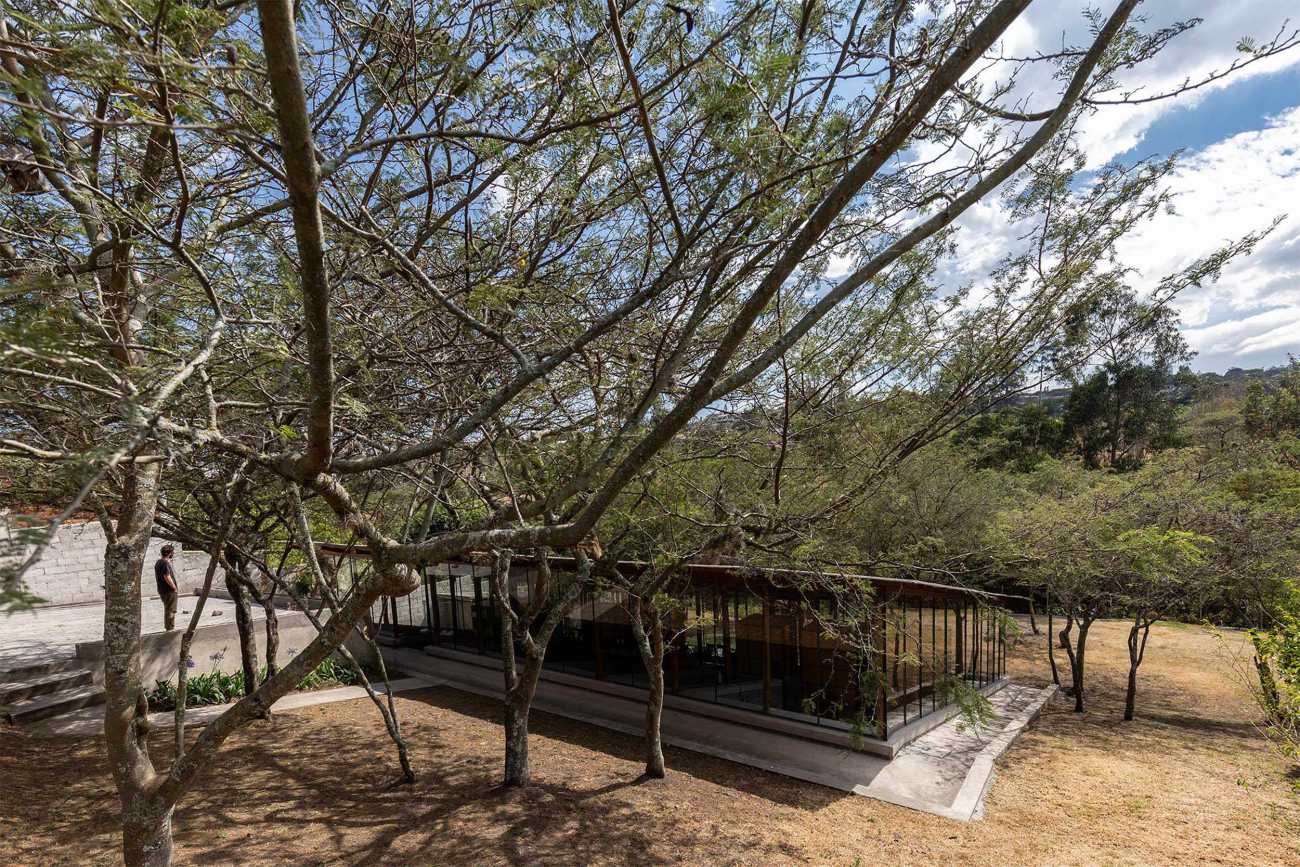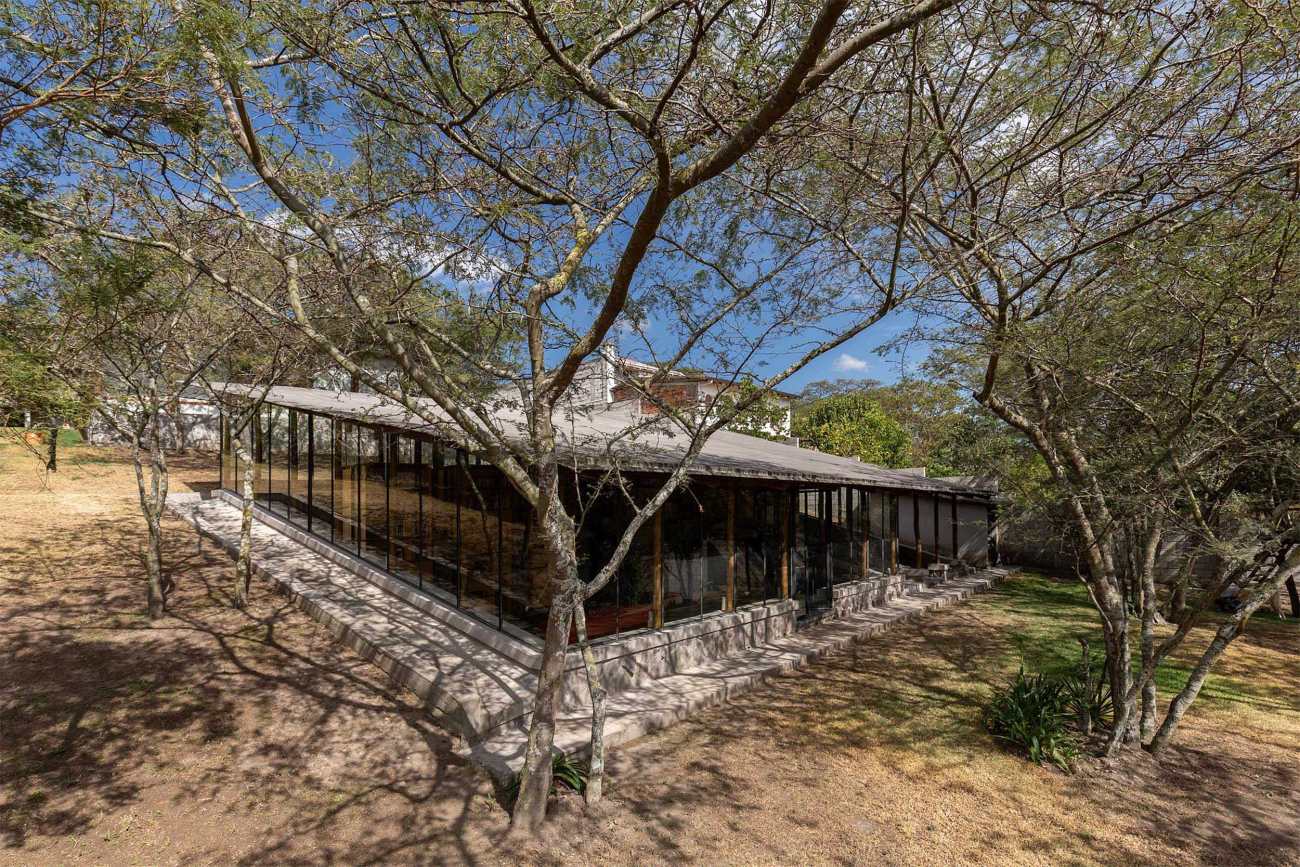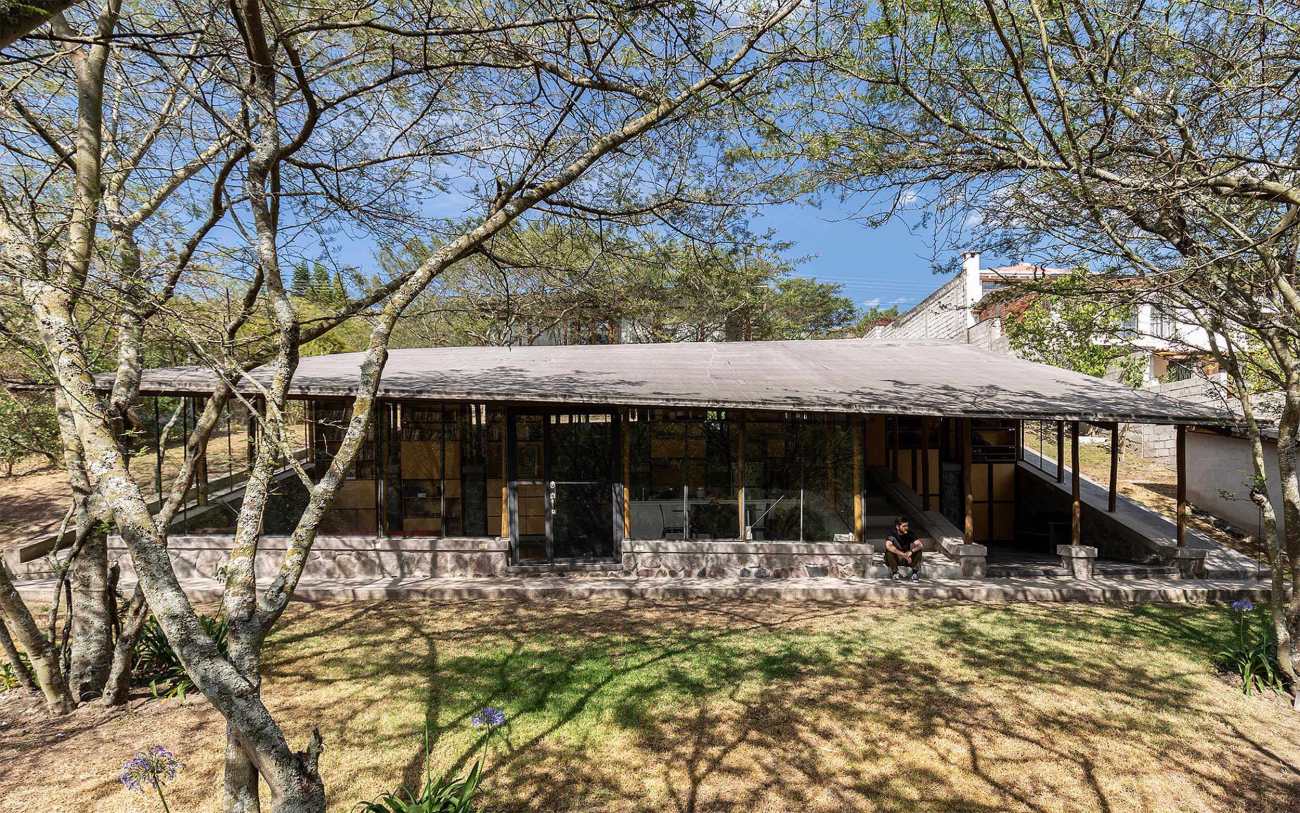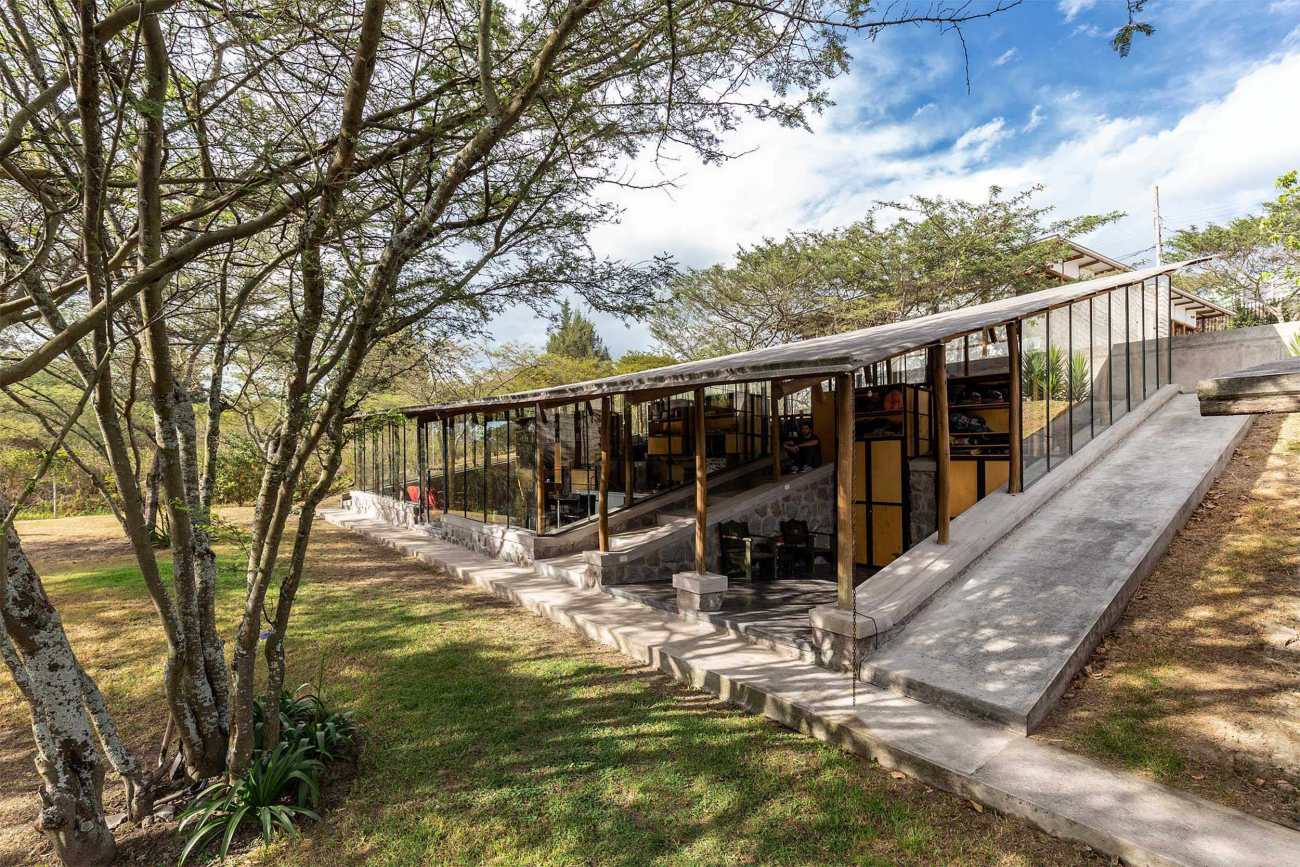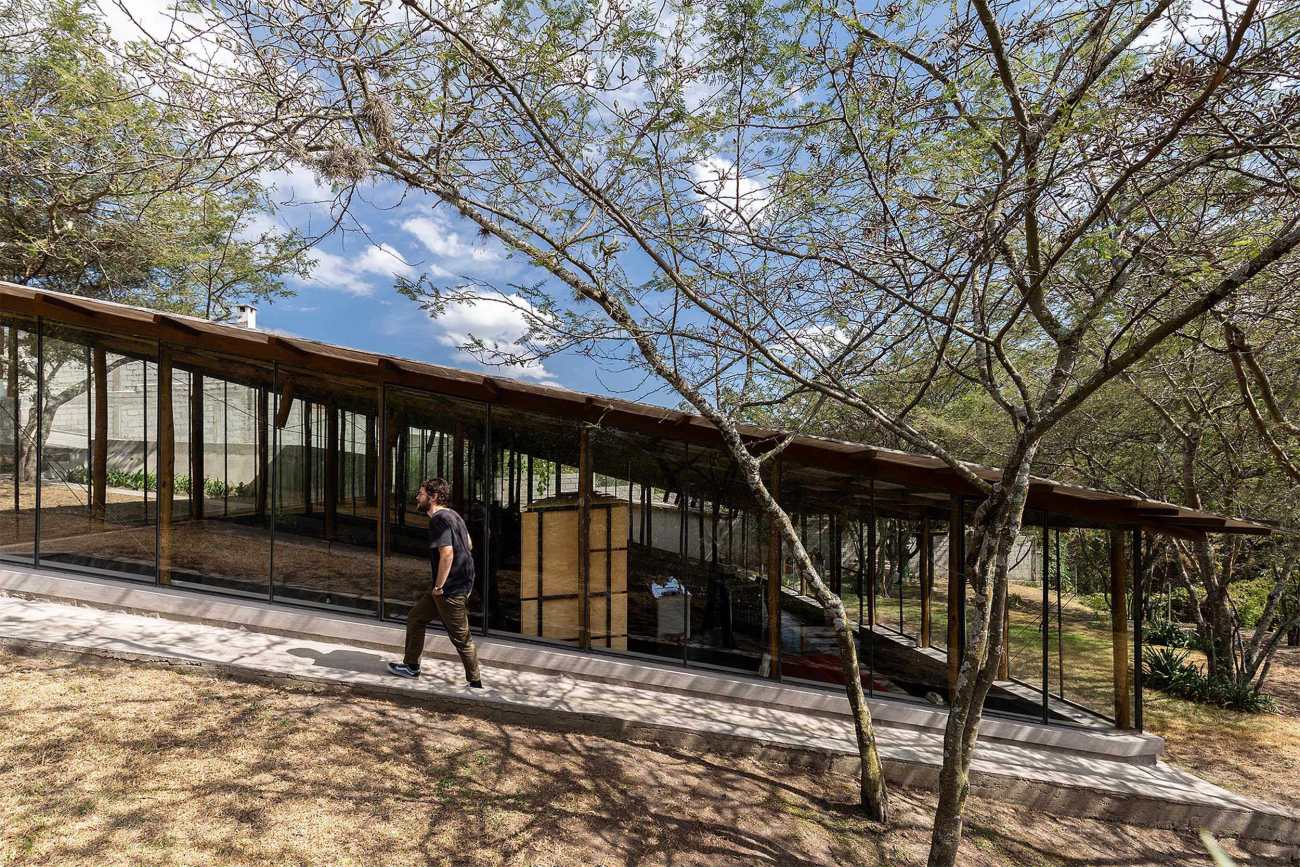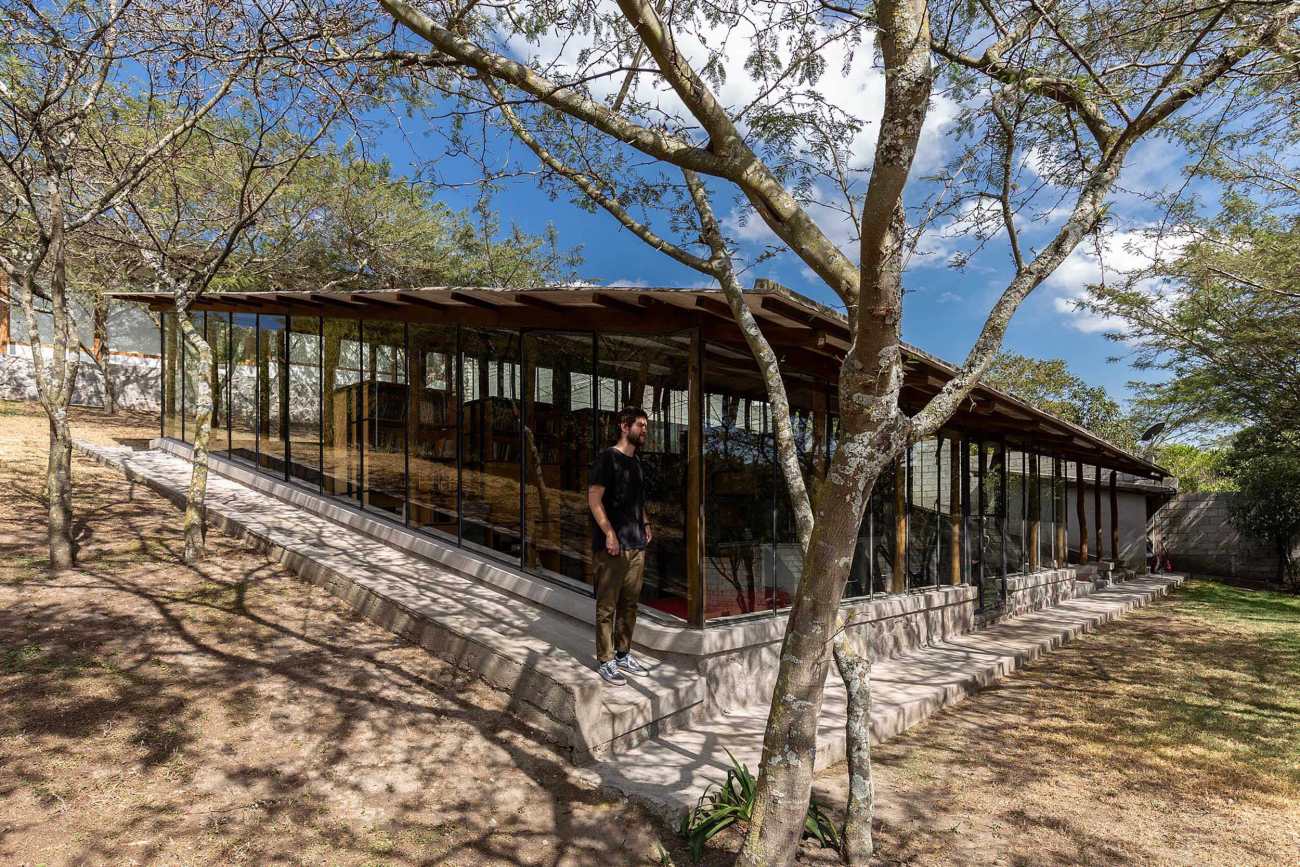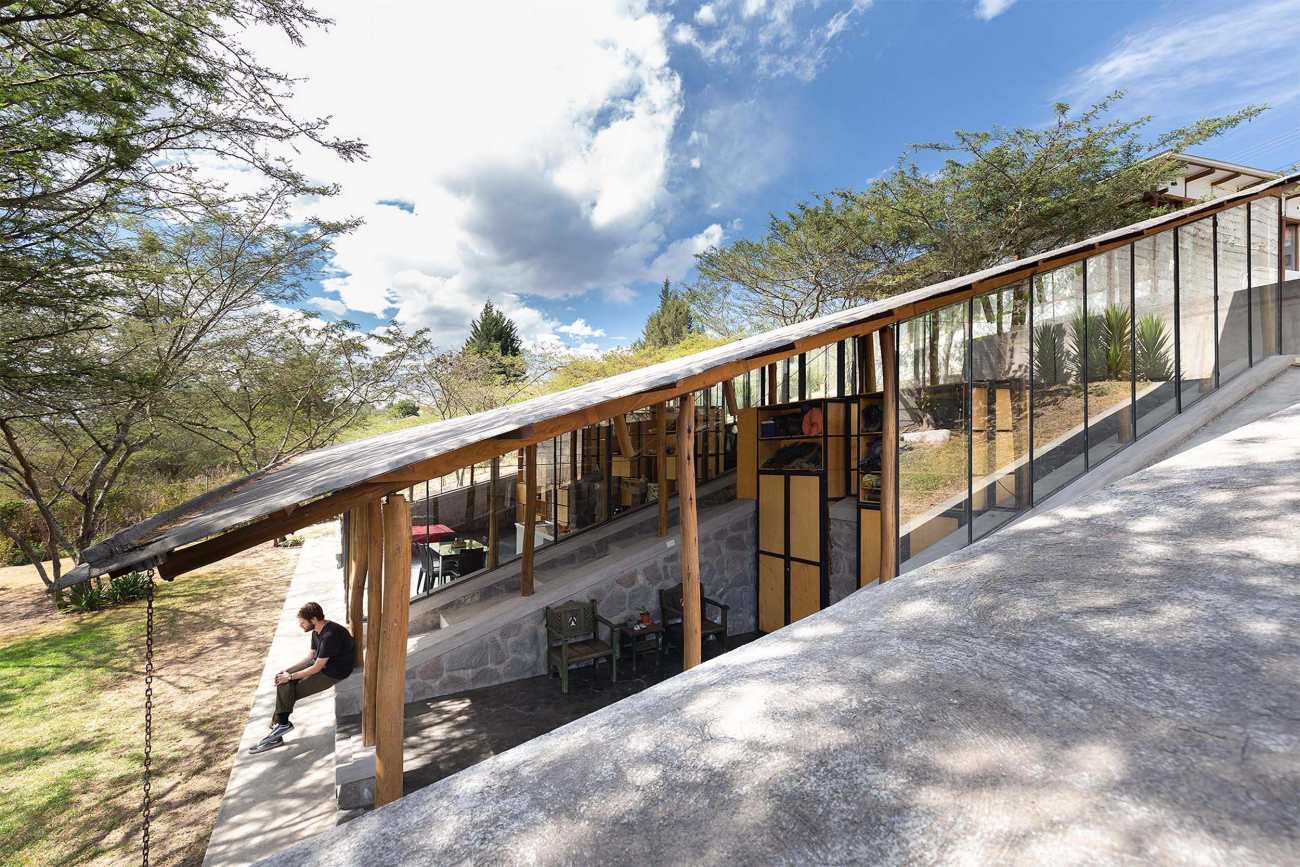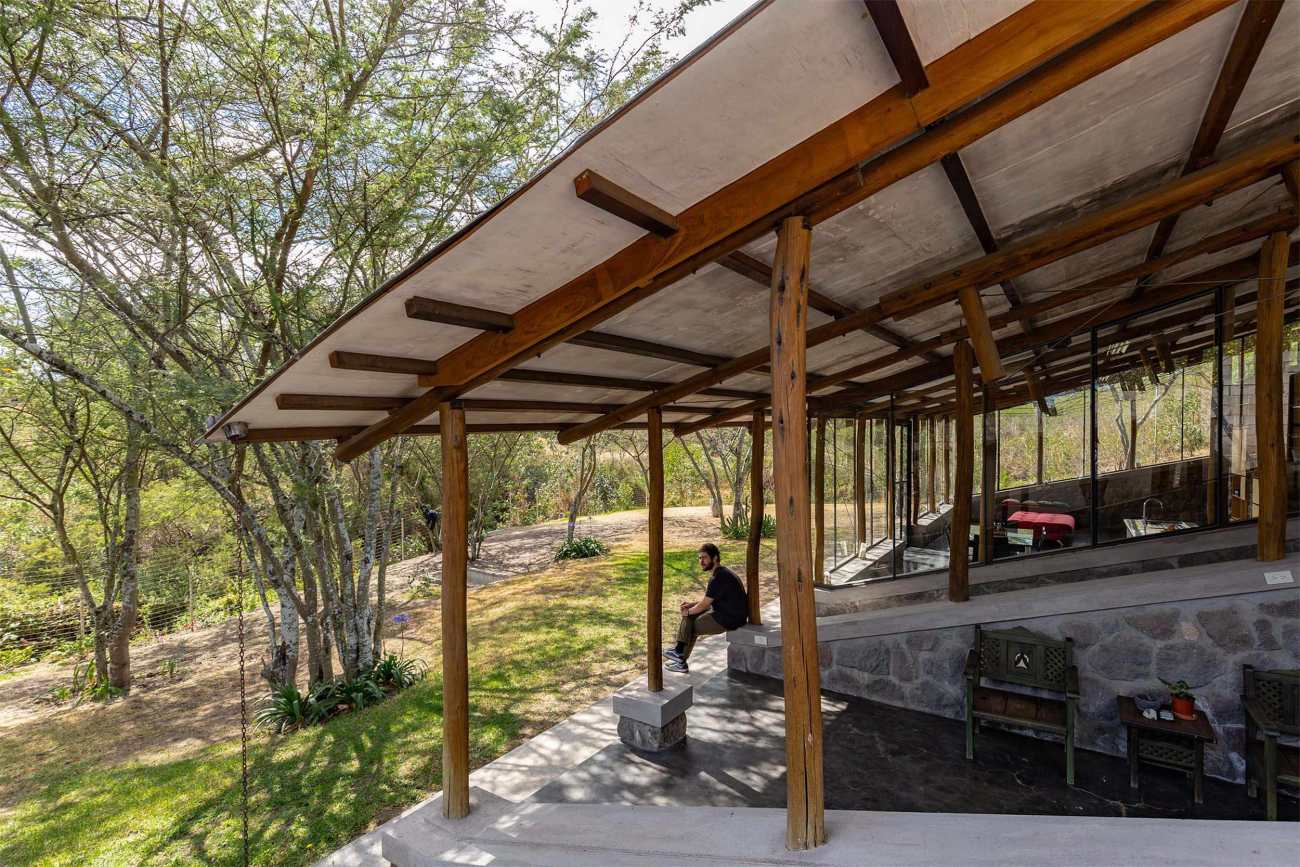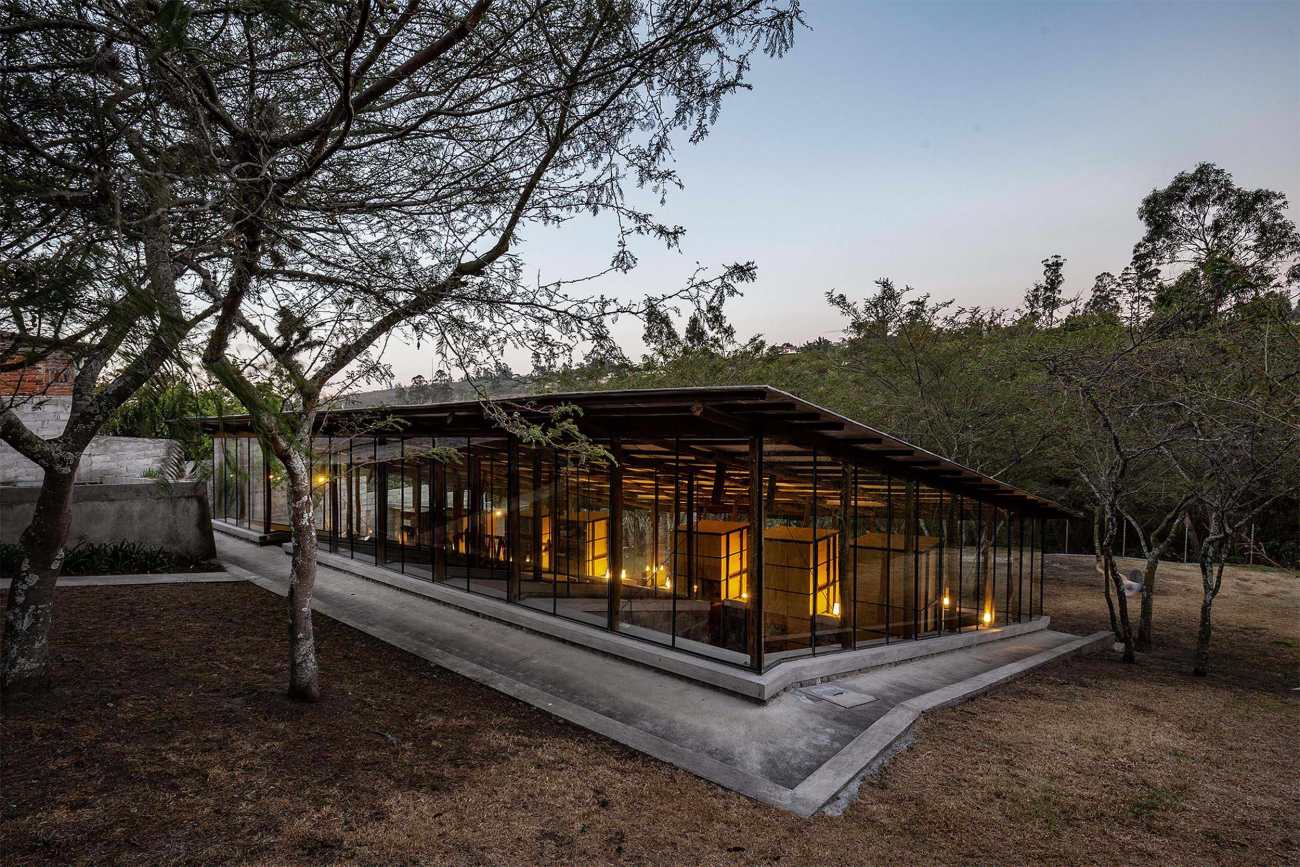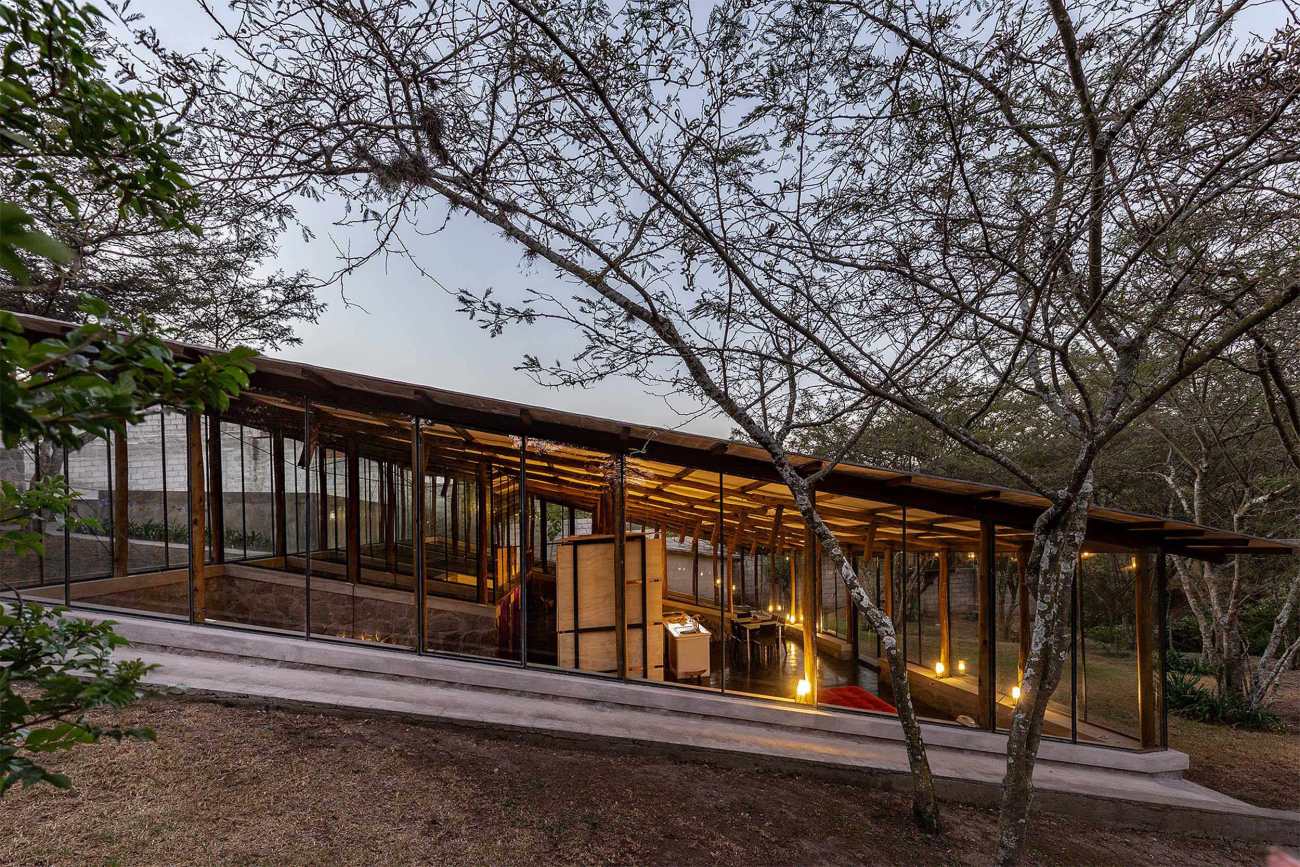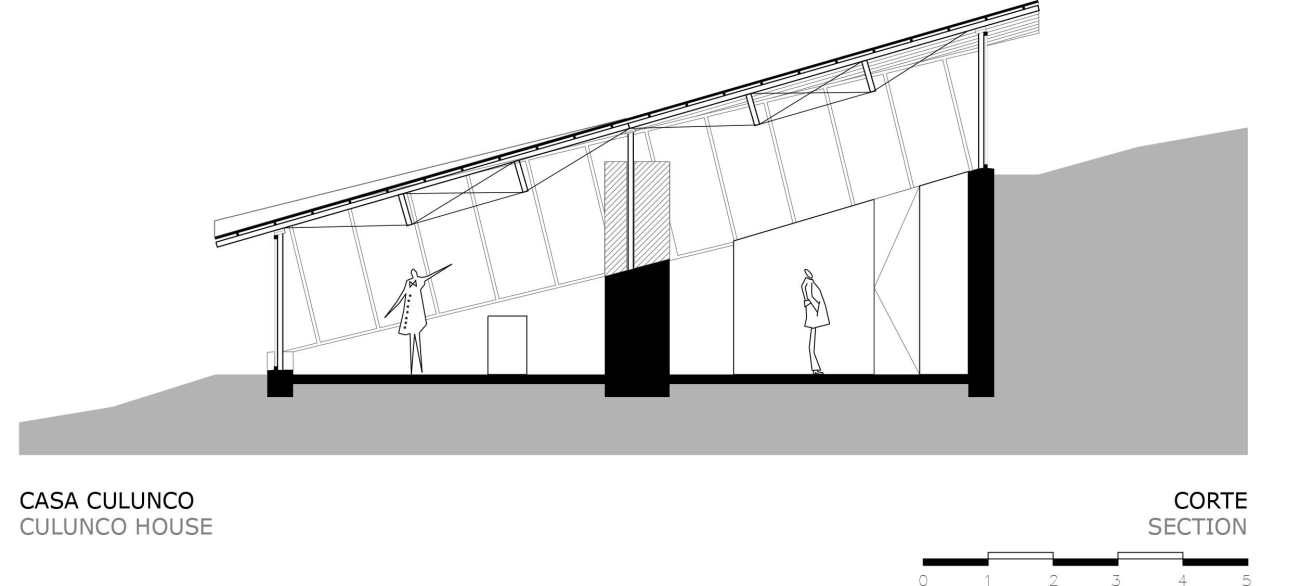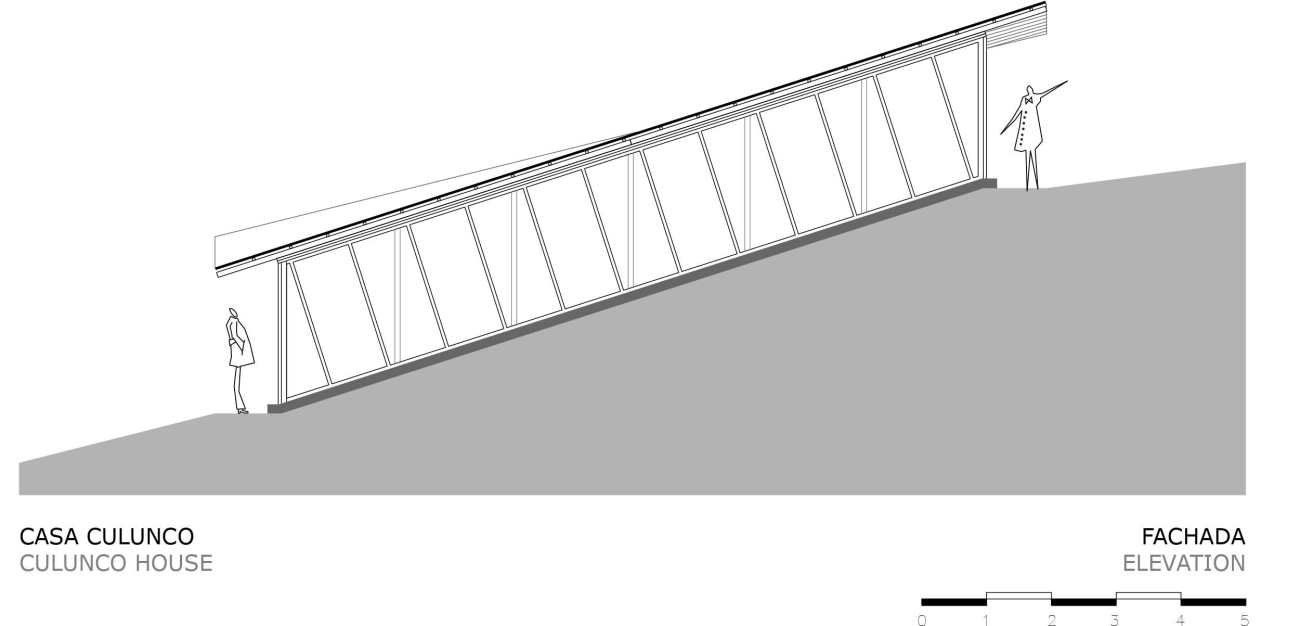Culunco是位于茂密植被中的小路的名字,一般是为拉丁美洲的古村落而建的小路,如印加人的小路。这也是来自Al Borde的建筑师们为位于基多Tumbaco山谷的一处坡地中间的挖掘房屋所选择的名字,周围都是泥土和树木。最初的项目由两栋房子组成,其中一栋最终建成,用当地材料建造。
Culunco is the name given to the paths situated in the middle of a dense vegetation, generally paths that were created for ancient villages of Latin America, like those of the Incas. This is as well the name that the architects from Al Borde chose for an excavated house in the middle of a sloping ground, surrounded by earth and trees in the Valley of Tumbaco, in Quito. The original project was composed of two houses, one of which was finally built, constructed with local materials.
建筑的出发点是与自然的紧密接触,尽管它被住宅的和谐存在所修饰。垂直体量由入口楼梯分隔的两个程序组成,但被相同的挖掘、相同的施工系统和相同的屋顶连接在一起。在一侧,有两间卧室,面向客厅和厨房开放;另一边是音乐工作室和工作室。浴室和卧室必需的隐私是由植入创造的:场地本身保护私人用途,而玻璃立面用于社交区域。
The starting point was an intense contact with the nature, although it was modified by the harmonious presence of the house. The orthogonal volume is composed of two programs divided by the stairs of the entrance but united by a same excavation, same construction system and same roof. On one side, buried, are organised two bedrooms that are opened on the living room and the kitchen; on the other side, a music studio and a workshop. The privacy necessary for the bathrooms and bedrooms is created by the implantation: the site itself protects the private uses, while the glass facade is used around the social area.
建筑学上的近似是由气候、成本和简化的建筑系统所决定的。Tumbaco距离基多40分钟车程,海拔2600米。它的气候温暖,不需要空调、暖气或任何复杂的隔离系统。然而,它使用太阳作为加热的来源。这种背景下,建筑师选择了玻璃作为房子的整个周边,开口确保通风。房子的埋藏部分所产生的热惯性使其具有足够的热舒适度。
The architectonic approximation is given by the climate, the costs and the simplified construction system. Tumbaco is situated 40 minutes from Quito and at 2600 meters above sea level. Its climate is warm and doesn’t need air conditioning, heating or any complex isolation systems. However it uses the sun as a source of heating. This context is why the architects chose glass for the whole perimeter of the house, the openings ensuring the ventilation. The thermal inertia produced by the buried part of the house allows an adequate thermal comfort.
该结构是由大小和直径相同的桉树树干组成的模块化系统,坐在倾斜度不同的石墙上。这片树枝林支撑着由白色胶合板制成的平台,这些胶合板向同一个消失点倾斜,整个地板由光滑的混凝土制成。
The structure resulted from a modular system of eucalyptus trunks of a same size and diameter, seated on a stone wall with varied inclinations. This forest of sticks supports the paraboloide deck made of plywood sheets painted in white, that are inclinated towards a same vanishing point. The whole floor is made of smooth concrete.
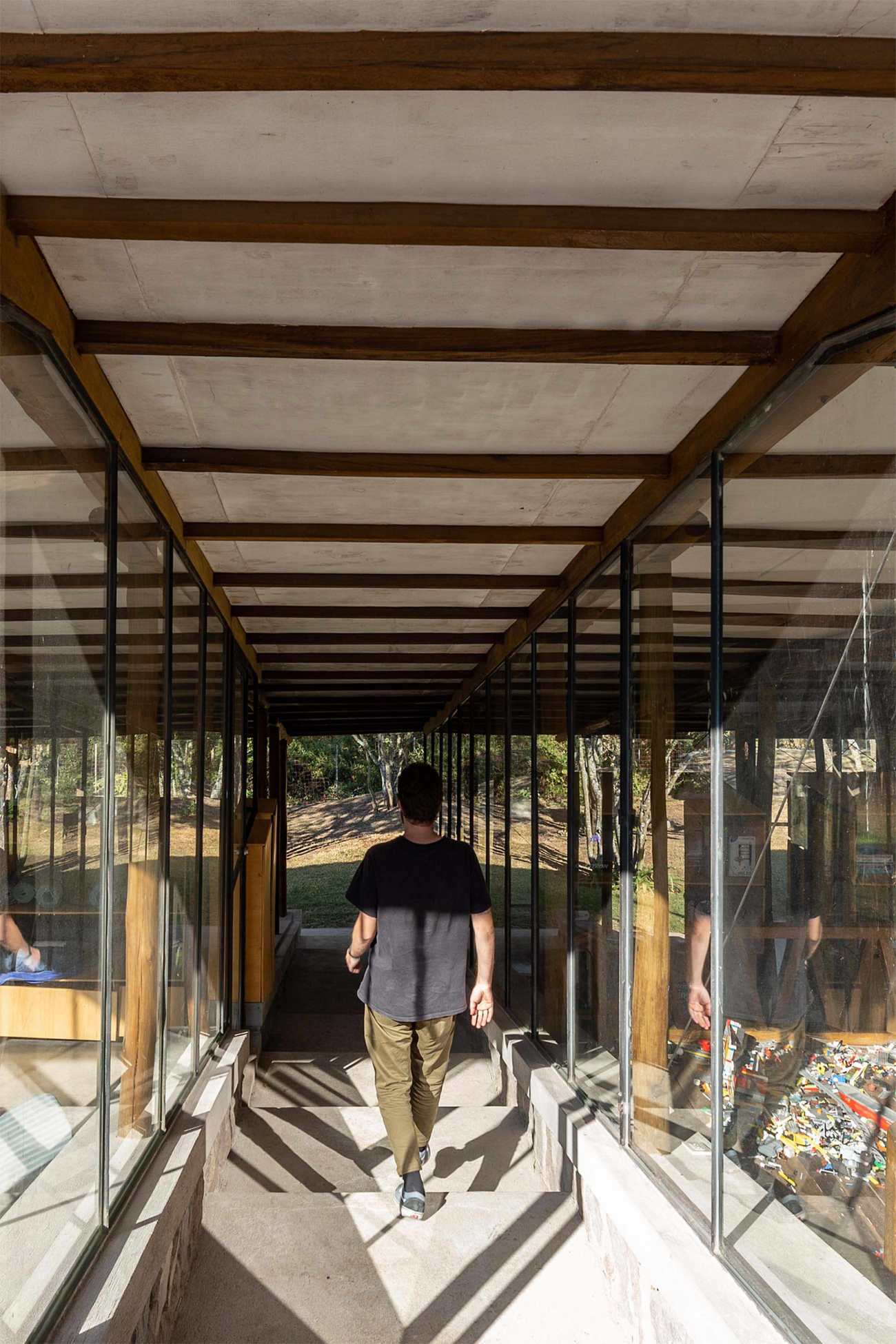 | 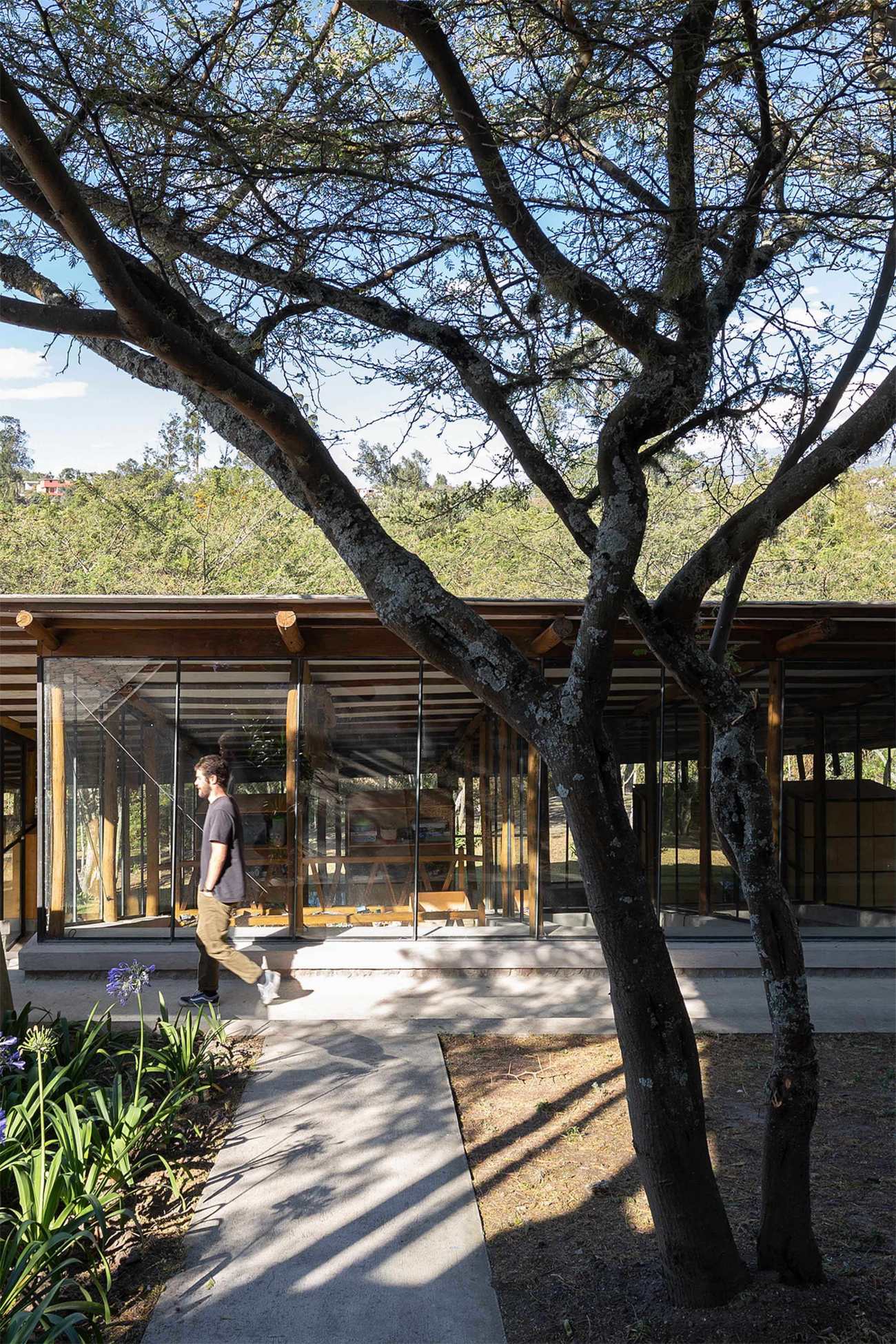 | 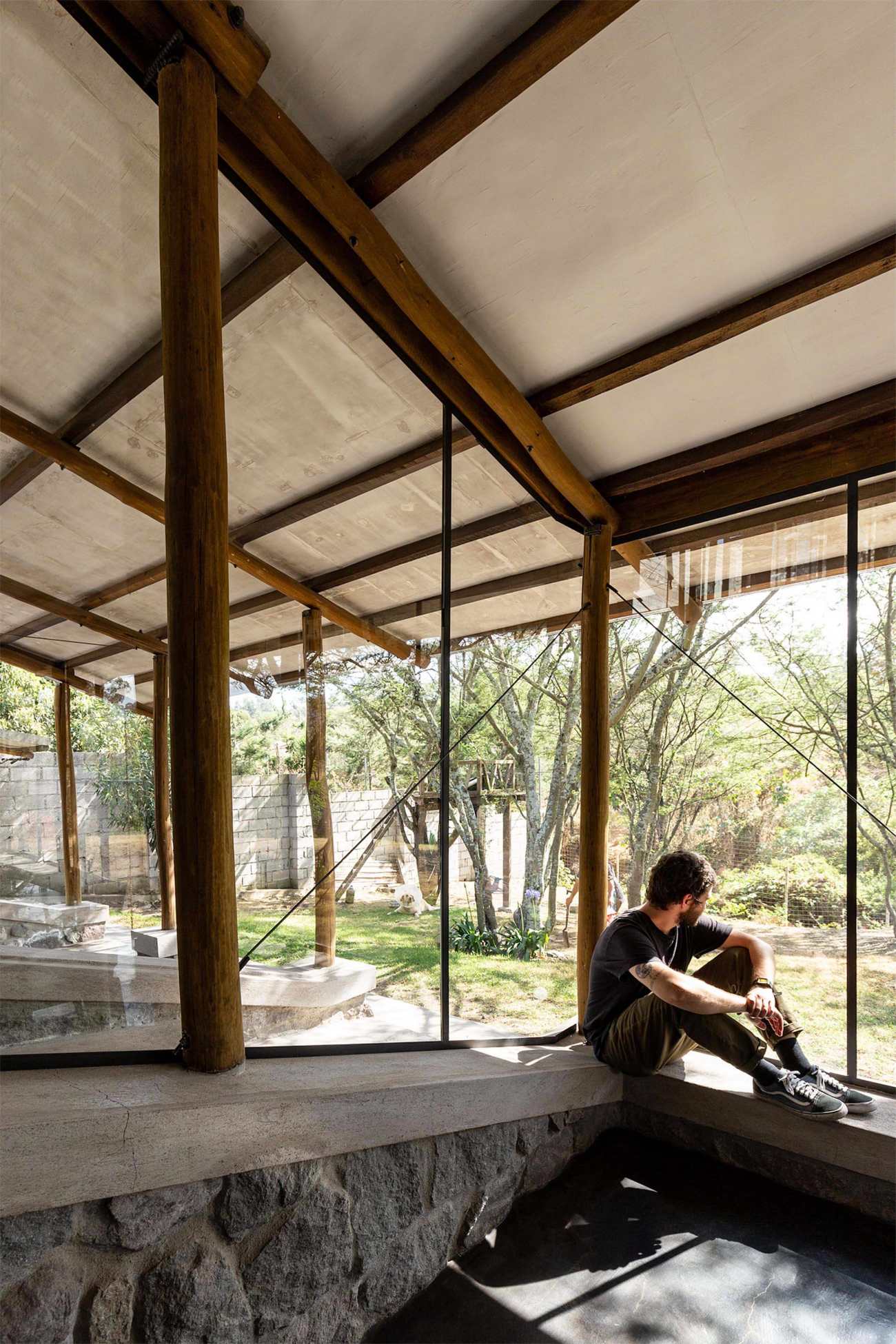 |
结构上的调剂和材料的选择很容易获得和简单,使得这个属性成为项目的建设。在厄瓜多尔,桉树树干是最便宜的建筑材料之一,通常用于模板工程或临时住房。与混凝土的墙体相比,用石块砌成的墙体成本更低,也更容易制作。构造上的简单并不妨碍建筑师创造战略性的空间关系,保证了Culunco之家的美观和舒适。
The structural modulation and the selection of materials easily accessible and simple allowed the property to become the construction of the project. In Ecuador, eucalyptus trunks are one of the cheapest materials of construction, usually used for formworks or temporary housing. Walls made of stonework are less expensive and easier to produce than walls of concrete. The constructive simplicity didn’t prevent the architects of creating strategic spatial relationships that guarantee beauty and comfort in the Culunco House.
▽平面图 Plan
▽剖面图 Section
▽立面图 Elevation
Project: Culunco House
Client: Family Larrea Bravo
Architects: AL BORDE
Project Coordinator: Elaine González
Location: Tumbaco, Quito - Ecuador
Construction: Cristina Bravo
Furniture: Juan Subía, Felipe Donoso, Diego Benavides
Area: 185.92 m2
Design: 2012 -2013
Construction: 2013
Photographs: JAG Studio, Elaine González, Al Borde
Website: www.albordearq.com
E-mail: contact@albordearq.com
更新日期:2021-01-07 16:24:45
非常感谢 AL BORDE 带来的精彩项目, 查阅更多Appreciations towards AL BORDE for sharing wonderful work on hhlloo. Click to see more works!
